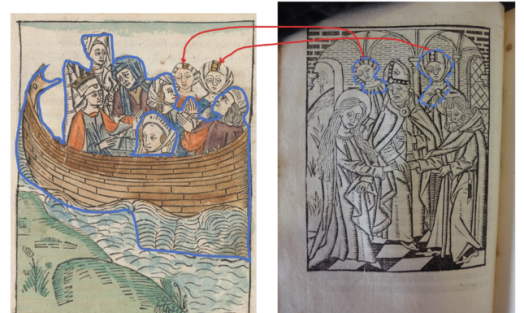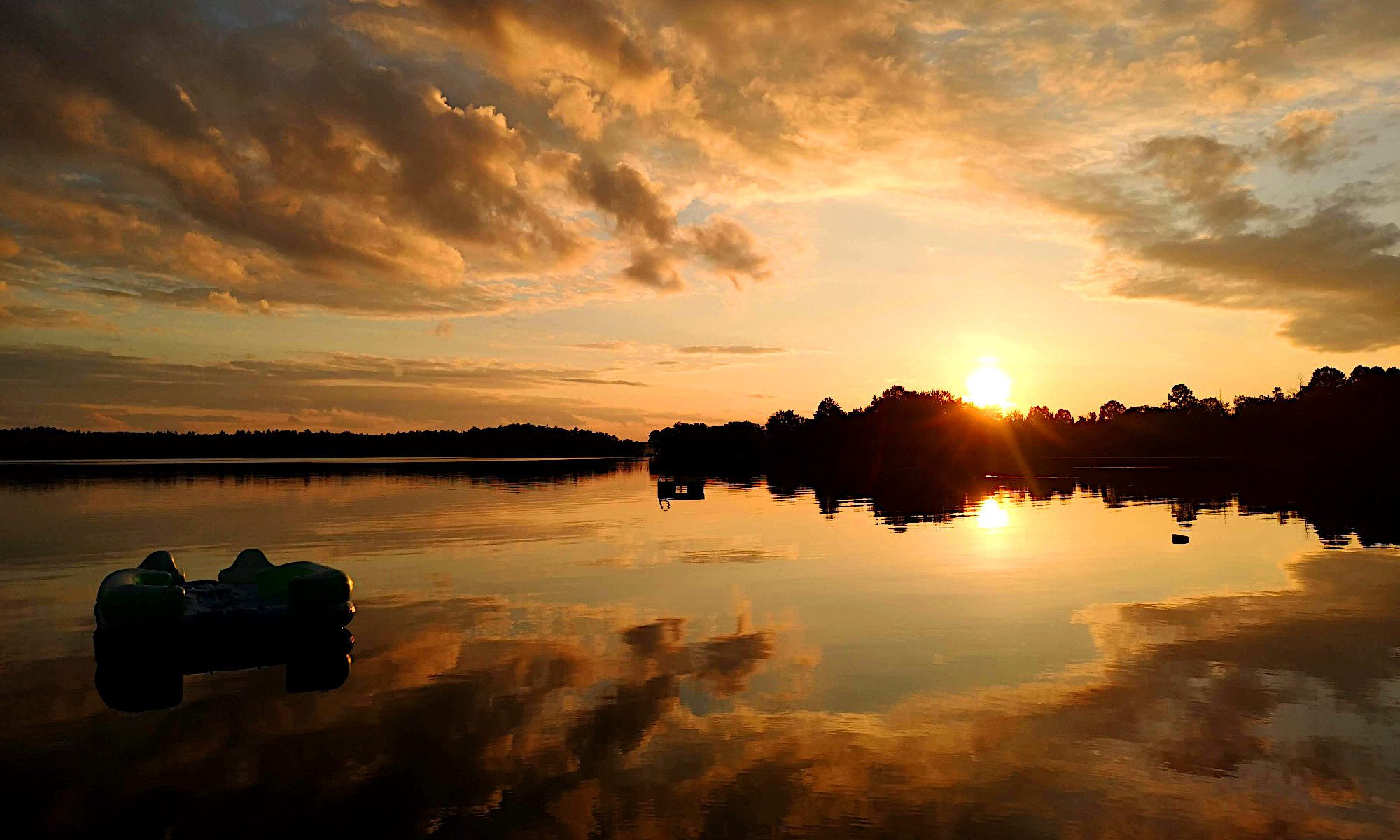Manipulating and enhancing images may seem something that is particular to the current digital age, but as researcher Anna Dlabacová describes, some medieval manuscripts such as The Kattendijke Chronicle, a late fifteenth-century manuscript from the Low Countries, contain fascinating examples of analogue image editing. In one image of people in a boat, for example, both the people and the land the boat is headed towards have been taken from other manuscripts.
At first sight, the image of a group of people in a boat might appear to be a straightforward woodcut that was pasted into a manuscript (fig. 1). Since single leaf prints – woodcuts and engravings – were used more often in handwritten books from the second half of the fifteenth century (see e.g., Rudy 2019), this example might not seem particularly special. A closer look, however, reveals several indications that there is much more to this image than meets the eye.

The so-called Kattendijke Chronicle derives its name from its seventeenth-century owner, Johan Huyssen of Kattendijke (1566-1634). In the 1990s his descendants made the manuscript available to a small team of researchers, which in 2005 resulted in an edition with an in-depth introduction that focused on textual, heraldic and codicological aspects, and explored the profile of the author of the Chronicle (Janse et al. 2005). The latter worked in Holland (possibly Haarlem?) and completed the book in or shortly after 1491.

